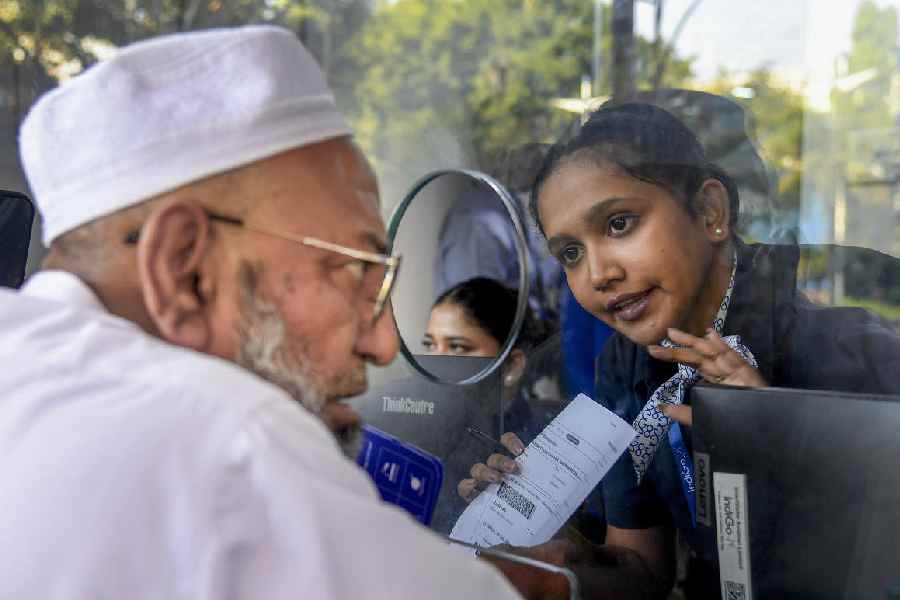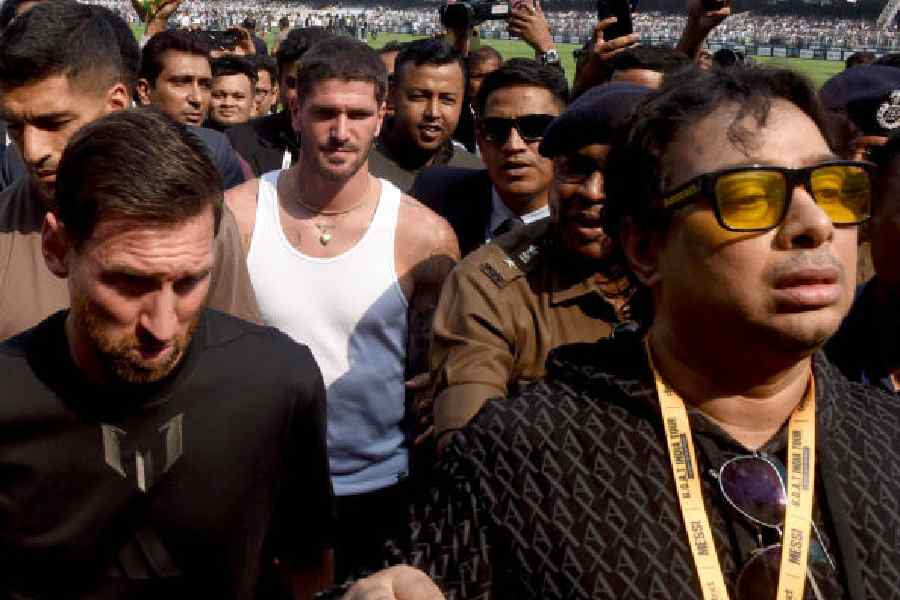 |
| BP Kesri leafs through the collection in Ranchi .Pictures by Prashant Mitra |
Septuagenarian tribal scholar B.P. Kesri is a man in a hurry. In January, he will publish his life’s work — a jaw-dropping compilation of 35,000 Nagpuri poems by Chotanagpur writers in the past 400 years.
The corpus includes works of 645 poets — royals, minstrels, farmers, homemakers, crusaders and labourers — who have written in Nagpuri, the regional link language between tribals and sadans or non-tribal original settlers.
It is a literary treasure trove that might have been forever buried, but for one man.
Kesri retired in 1993 as a professor at Ranchi University’s tribal and regional language department. With greater zeal, he sped up work of collecting Nagpuri poems — the seeds of which had germinated in him as a youth in 1951.
“I was an intermediate student of Ranchi College when I went home to Pithoria to attend a relative’s wedding,” Kesri recalled. “At night, I heard village women singing songs. The lyrics amazed me. In college, we were reading Chhayavad poems, Tagore, Wordsworth, Shelley, Keats. Here, in this sleepy village, I was astounded at the depth of meaning in Nagpuri songs,” he said.
It was then that the sensitive teenager decided on an audacious enterprise.
“I don’t know from where I got the guts. I just decided then and there to collect unpublished Nagpuri poems into a book,” Kesri said.
He didn’t know it would take over 60 years of his life. Nor that it would turn out to be such an enriching journey, both geographic and literary. Nor that he would end up spending a bulk of Rs 15 lakh — the cost of the project.
“Nagpuri poems were written either in Devnagri or Kaithy script. We all know Devnagri as Hindi language uses the script. Kaithy has been sidelined. So, meeting village elders who know Kaithy and getting them to read poems aloud while I or my helpers scribbled them out in Devnagri was an experience in itself,” he said.
Mentor and friend Ram Dayal Munda, Jharkhand’s cultural colossus, helped him in research. So did his colleagues like Rose Kerketta and Giridhari Ram Ganjhu, Nagpuri poet and dramatist Ashok Pagal, among others. “Not to forget my core team of young friends in Pithoria including Md Hussain, Chanda Kumari, Nazia Parveen, Rajani Kumari and others,” said Kesri.
Research included sifting through huge swathes of material, classifying them according to chronology and themes and identifying poets’ backgrounds. Finally, in August 2012, 1,000 pages of the book were finalised. In January 2013, the first edition of 1,000 copies will be published.
Kesri and his team managed to fix the time, place and background of 243 of 645 poets, including kings Dalel Singh and Raghunath Nripathi of Ramgarh and Doisa between 1600 and 1700 AD. He rued they could not find any clue to the identity of others.
“It is hard, hard work. We had started out in a vacuum, collecting original manuscripts, finding out as many details as possible from scraps of parchment and paper, illegible and faint writing. There was no ready archive material,” said the academic. “Our sincerity shone through,” he added.
Literary merit of the works, he said, buoyed his spirits.
“Works of many poets can be equalled with those of the English Romantics and Tagore,” he said. “This is no exaggeration. Themes range from devotion, romance, social uplift, everyday and historical chronicles. Approaching 20th century, colonial uprising and a yearning for statehood are discerned,” he said.
As the hour of reckoning nears, what are his thoughts?
“I am excited that a buried treasure has been unearthed. Nagpuri poetry will take its pride of place in the literary world,” he smiled, adding he preserved the original manuscripts at Nagpuri Sansthan, Pithoria, 20km from Ranchi.










